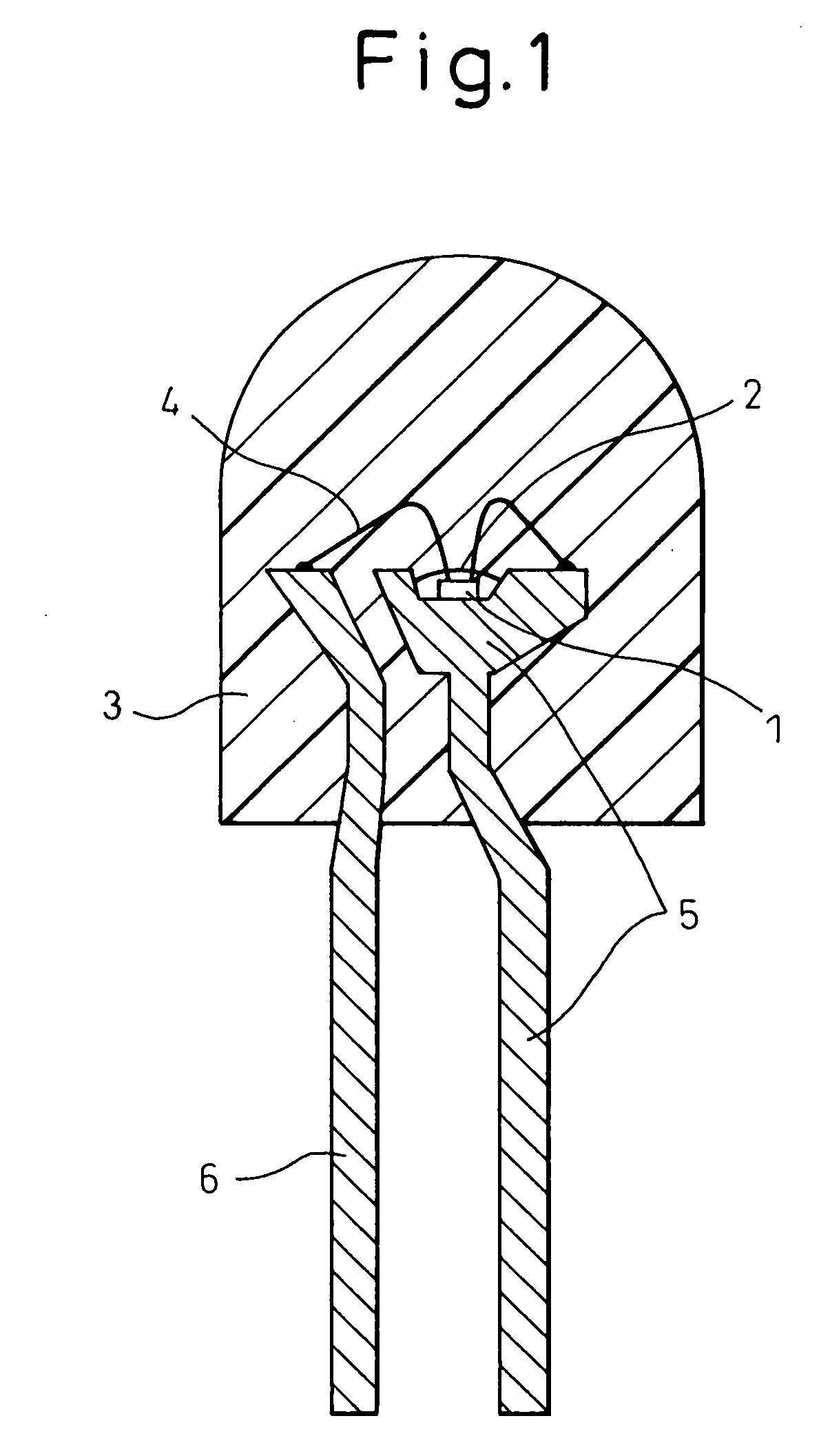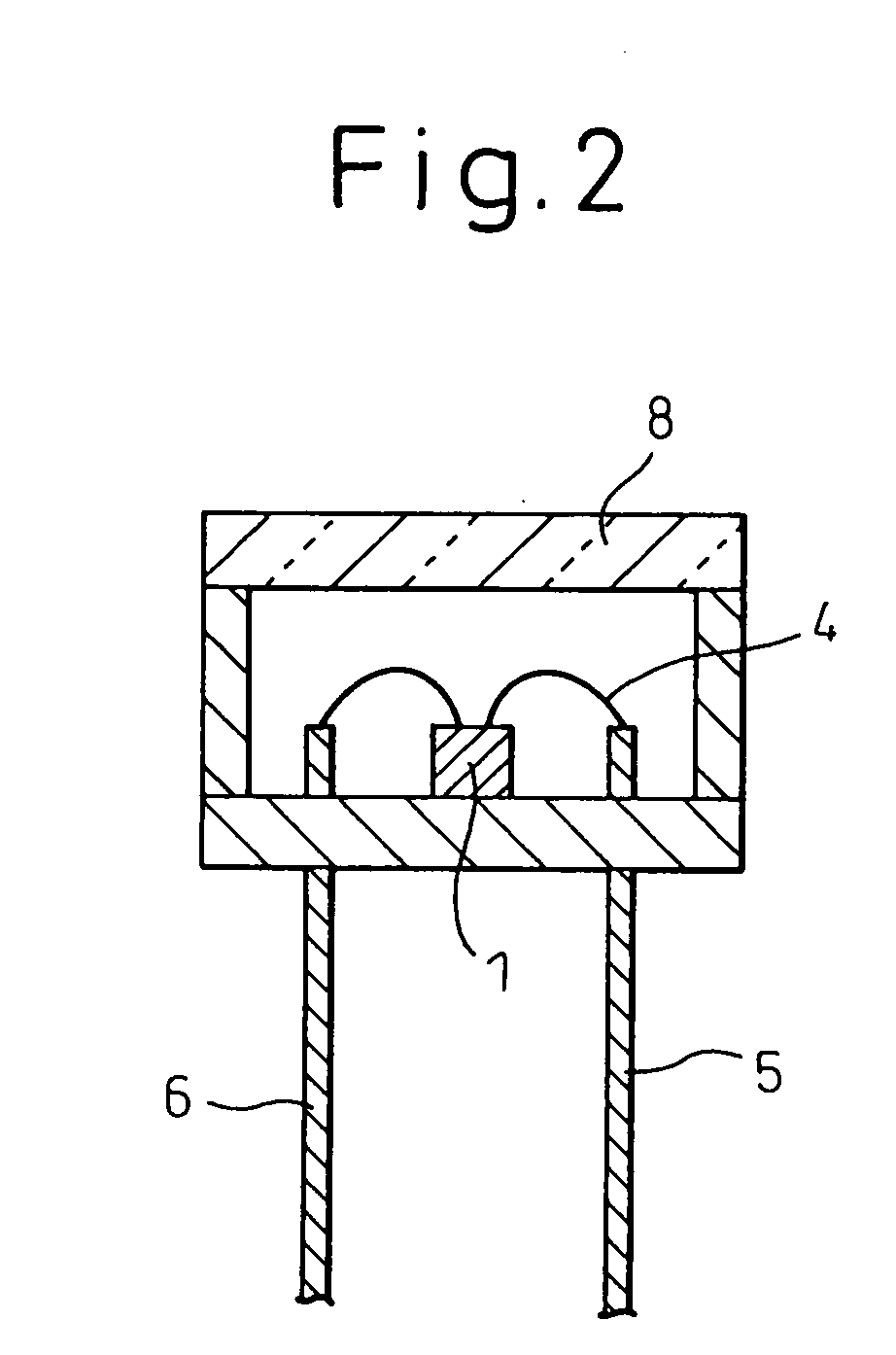Ceramic composite material for optical conversion and use thereof
a composite material and optical conversion technology, applied in the direction of basic electric elements, chemistry apparatus and processes, and compositions of light-emitting components, can solve the problems of high cost, high cost, and high cost, and achieve the effect of improving the heat resistance and ultraviolet light resistance of resins for coating layers and molded layers, and achieving good reproducibility
- Summary
- Abstract
- Description
- Claims
- Application Information
AI Technical Summary
Benefits of technology
Problems solved by technology
Method used
Image
Examples
example 1
[0058] An α-Al2O3 powder (purity: 99.99%) and a Y2O3 powder (purity: 99.999%) were mixed at a ratio of 82:18 by mol and a CeO2 powder (purity: 99.99%) was mixed to have a ratio of 0.01 mol per mol of Y3Al5O12 produced by the reaction of oxides charged. These powders were wet-mixed in ethanol by a ball mill for 16 hours and, then, the ethanol was removed by using an evaporator to obtain a raw material powder. This raw material powder was preliminarily melted in a vacuum furnace and used as a raw material for the unidirectional solidification.
[0059] The obtained raw material was charged into a molybdenum crucible and, then the crucible was set in a unidirectional solidification apparatus. The raw material was melted under a pressure of 1.33×10−3 Pa (10−5 Torr). In the same atmosphere, the crucible was moved down at a speed of 5 mm / hour, whereby a solidified body was obtained. This solidified body took on a yellow color.
[0060]FIG. 3 shows a cross-sectional texture perpendicular to th...
example 2
[0069] From the ceramic composite material for light conversion produced in Example 1, a thin plate was cut out by a diamond cutter. This thin plate was processed to produce a disc-like specimen mountable on a light-emitting diode shown in FIG. 2, and a light-emitting diode was fabricated. The wavelength of the blue light-emitting diode chip used was 470 nm. FIG. 10 shows a light emission spectrum of the thus-obtained white light-emitting diode. Blue light at about 470 nm and light at 530 nm emitted from the ceramic composite material for light conversion were observed.
[0070] Furthermore, the color was measured by placing this light-emitting diode in an integrating sphere. As a result, the color of emitted light had CIE chromaticity coordinates of x=0.27 and y=0.34 and was verified to be a white color.
PUM
| Property | Measurement | Unit |
|---|---|---|
| Color | aaaaa | aaaaa |
| Wavelength | aaaaa | aaaaa |
| Fluorescence | aaaaa | aaaaa |
Abstract
Description
Claims
Application Information
 Login to View More
Login to View More - R&D
- Intellectual Property
- Life Sciences
- Materials
- Tech Scout
- Unparalleled Data Quality
- Higher Quality Content
- 60% Fewer Hallucinations
Browse by: Latest US Patents, China's latest patents, Technical Efficacy Thesaurus, Application Domain, Technology Topic, Popular Technical Reports.
© 2025 PatSnap. All rights reserved.Legal|Privacy policy|Modern Slavery Act Transparency Statement|Sitemap|About US| Contact US: help@patsnap.com



